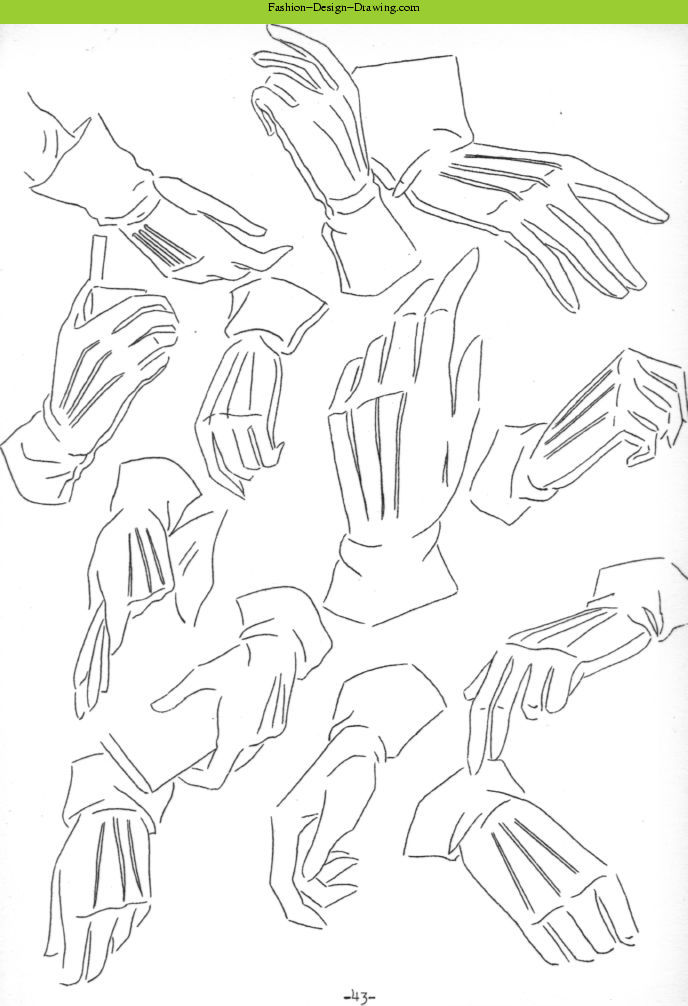THE ARMS AND HANDS
It is advisable for the student of fashion sketching to be familiar with the anatomical construction of the human figure. He should know the skeleton structure of the limbs , the trunk, and the hands and feet. A few skeleton sketches are included in this book but a more extensive knowledge may be gained through the study of anatomy books and life sketching.
The upper limb is composed of three masses, the upper arm, the fore-arm, and the hand. The upper arm extends from the shoulder to the elbow. It has only one large bone. The forearm extends from the elbow to the wrist and has two bones. The bones of the fore-arm are jointed together in such a way they can move freely, one on another in certain positions. The outer bone rotates over the inner bone. The movement of these bones will influence the contour of the arm.
The hand is composed of two large masses, the hand proper and the thumb. These should be blocked-in first in sketching the hand. The length of the hand, including the wrist, is equivalent to the length of the head. It is three-quarters the length of the fore-arm. The hand and wrist move together as one mass. The wrist is twice as wide as it is thick. The bones of the fingers are attached to a common center in the same manner as petals in a flower. Each finger has three bones. The middle finger is the longest, and is the same length as the palm. The hand is slightly arched across the back, as, also, are the knuckles. The second knuckle is the highest and largest.
The fashion artist exaggerates the length of the fingers, and minimizes the width of the hand. Long and graceful, is the creed for fashion hands.
Make sketches of your own hands in various positions. Work before a mirror and sketch the reflection. This is also beneficial in sketching figures. Be your own model. Study your hands and figure for reference.


Skeleton Structure of the Upper Limb



Fashion Drawing Sections
- Animated Fashion Figure
- Developing Originality
- Dressing The Figure
- Fabrics
- Fashion Design Figure
- Fashion Design Sketches Feet Legs
- Fashion Figure Blocking In
- Fashion Sketches Arms And Hands
- Fashion Sketches Head and Face
- Fashion Sketching Clipping Files
- Fashion Sketching Materials
- Figure In Action
- Figure In Sitting Position
- Layouts
- Mannequin Fashion Figure
- Pen And Ink Sketching
- Sketching Accessories
- Sketching Children
- Transparent Wash Drawings